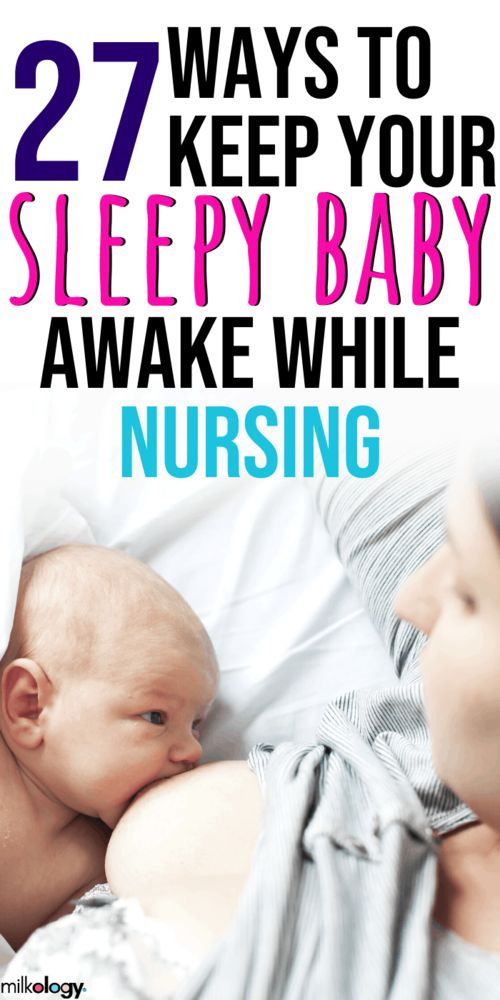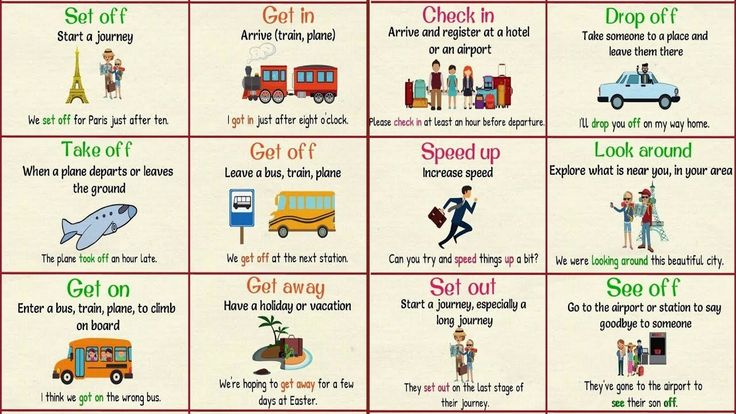My baby falls asleep while bottle feeding
How to Burp a Sleeping Baby: Step-by-Step Guide
Some babies are gassier than others, but most babies will need to be burped at some point. Babies need to burp a lot more often than older kids and adults. They drink all of their calories, which means they can gulp a lot of air.
Burping a baby can be important day and night. Sometimes babies fall asleep while eating and you may need to find a way to burp them while they’re still asleep. It’s remarkable how much a newborn can sleep through.
Even if your baby falls asleep, try burping them for a few minutes before placing them back down to sleep. Otherwise, they make wake up in pain with trapped gas.
Not all babies burp, though, no matter if it’s on their own or with your help. If your baby is one that needs to be burped, read on for ways to do so even when they’re asleep.
It’s common for babies to fall asleep while eating, whether nursing or bottle-feeding. As their tummy fills and they start soothing sucking motions, they often become happy and relaxed and tend to drift off.
This is especially likely to happen at night when their sleep drive is strong. But even if your little one looks content and totally asleep, for some babies it’s important you try to get a burp out of them before lying them back down.
Burping a sleeping baby is basically the same as burping a baby who’s awake. You might move slower to help them stay asleep. Some burping positions are a bit easier to maneuver with a sleeping baby.
For example, many people sit a baby upright on their knee while supporting the baby’s head by cradling their chin. This position uses gravity and the baby’s own weight to get air up and out. However, this position is more likely to wake a baby, so you might not want to try it if your aim is to keep the baby asleep.
To burp a baby, they should be in a slightly upright position so you can put pressure on their tummy. If your baby doesn’t poop right after eating, you may want to change their diaper before feeding them at night so you don’t have to wake them up if they fall back to sleep while eating.
Here are some positions for burping a sleeping baby:
Burp between changing sides, or mid-bottle
A sleepy baby may enjoy their feeding so much that they overeat and don’t realize they need a pause to burp. Help your baby have a gentler burp and avoid any major gas pain by slowing down the feed.
Burp your baby between switching sides at the breast or before they finish their bottle. This will also help your baby make room for more milk instead of burping and spitting up any of their food.
Hold on your shoulder
If you feed your baby in a semi-upright position, you can gently move them all the way upright and onto your shoulder. Babies can keep sleeping in this cozy position while the pressure from your shoulder pushes on their tummy to release gas. Keep a burp rag over your shoulder if your baby tends to spit up.
Hold lower on your chest
Similar to the previous position, you can lift your baby from semi-upright to fully upright and keep them on your chest or sternum area.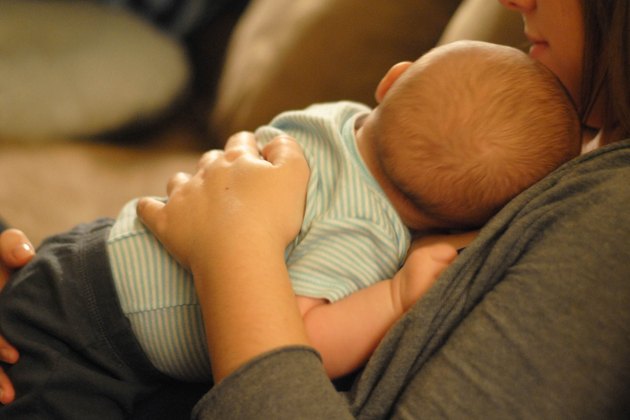 This may be most comfortable if you’re on a couch. Babies like to curl up with their legs in a frog position (a bonus move to release more gas from their bottoms) and you can support their head and wait for the burp to come.
This may be most comfortable if you’re on a couch. Babies like to curl up with their legs in a frog position (a bonus move to release more gas from their bottoms) and you can support their head and wait for the burp to come.
Rock on your arm (“sloth hold”)
After feeding, you can slowly turn them away from you at 45 degrees so their tummy rests on your forearm. Support their head in the crook of your elbow. Their legs may dangle on either side of your arm. This position puts pressure on their belly and you can gently pat their back until they burp. You can do this position while sitting or standing.
Lay on your knees
If you’re sitting in a chair, simply move your baby to a laying position on their tummy on your knees. You can move your legs side to side to rock them and gently pat or rub their back until a burp comes. A baby can remain asleep here as long as you want to stay sitting.
Burping is one of the many tasks parents have until their child grows into being more self-sufficient.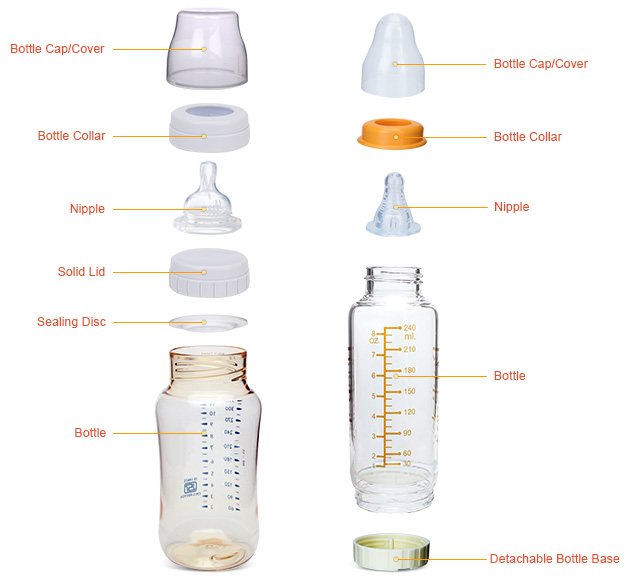 Kids and adults can easily release their own gas, but many babies need help because they have so little control over how their bodies are positioned.
Kids and adults can easily release their own gas, but many babies need help because they have so little control over how their bodies are positioned.
You’ll figure out pretty quickly if your baby is the type who can eat without burping or if they need to be burped every time. If your baby has a lot of gas or spit-up, you should talk to your doctor about reflux.
If you do have a colicky baby but you can’t seem to get them to burp, focus on any comfort measures that work and don’t worry too much about getting burps out. One study suggests that burping won’t help decrease colic.
Whether your baby burps a lot during the day, it may be worth it to burp them after every nighttime feeding. Since you’re already up feeding the baby, make the most of your time by giving a solid attempt at burping. This may get everyone a long stretch of sleep after the feeding.
Gas drops and gripe water are readily available at pharmacies but ask your doctor first before using any of them.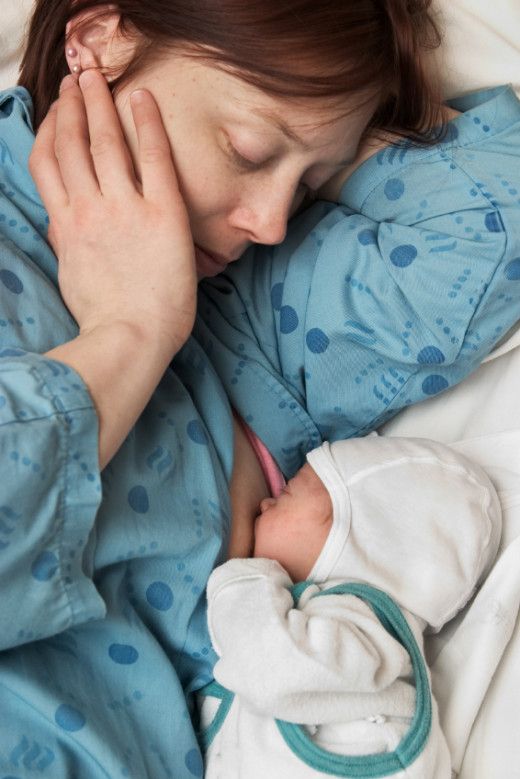 These supplements aren’t regulated for safety and may contain dangerous ingredients. If you have a very fussy and gassy baby — whether or not they spit up often — ask a doctor for coping skills. Most babies grow out of this after a few months.
These supplements aren’t regulated for safety and may contain dangerous ingredients. If you have a very fussy and gassy baby — whether or not they spit up often — ask a doctor for coping skills. Most babies grow out of this after a few months.
Risk of choking on spit-up is very rare. It’s still important not to overfeed your baby and to try to burp them after every feeding if they seem to benefit from it.
Burping usually only takes a minute or two. Sometimes a burp will come up as soon as you move your baby upright, and sometimes you have to wait a little while and help things with a gentle pat or tummy pressure.
Another helpful strategy is to get your baby in the habit of falling asleep in their crib rather than while feeding. When you notice them getting sleepy at the breast or bottle, stop the feeding, burp them for a minute or so, and then put them down to sleep. The younger you start this, the easier it is to do.
If your baby is often stiff and uncomfortable, talk with their doctor about more help for relieving gas. Some babies with bad reflux may need to stay upright for 30 minutes after eating, day or night.
Some babies with bad reflux may need to stay upright for 30 minutes after eating, day or night.
If your baby is asleep, try burping them for a minute before you lay them back down. Sometimes babies don’t need to burp as much at nighttime because they eat slower and don’t get as much air while feeding.
If they wake up crying, soothe them, check to see if they need a clean diaper, feed them again if it’s time, and try to burp them after that feeding.
Some people believe that bottle-fed babies are more likely to get gassy, but evidence of this is only anecdotal. Bottles may expose babies to more air as they gulp and may make it easier to overfeed your baby. But every baby is different and even breastfed babies can be very gassy — sometimes because they’re sensitive to food in their mother’s diet.
Though uncommon, a breastfeeding mother may have to experiment a lot before figuring out exactly what they ate to cause their baby’s upset stomach. There’s no solid research to tell a mother what exactly causes her baby’s excess gas.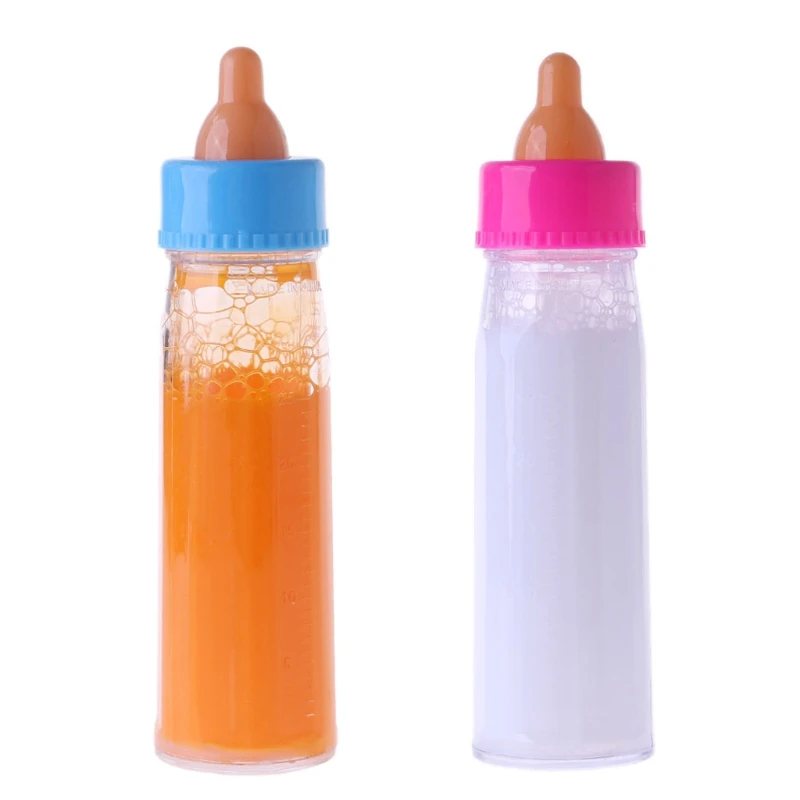 Also, many babies with gas aren’t bothered by it.
Also, many babies with gas aren’t bothered by it.
Burping is a basic but important way you can take care of your baby and keep them comfortable. Even if your baby is asleep, burping may be helpful to allow them to relieve gas so they don’t get uncomfortable or wake up too soon.
Keeping Baby Awake During Feeding
Read time: 4 minutes
What to know about babies who fall asleep while feedingUnderstand your baby’s sleep and eating patterns
Tips for keeping your baby awake and alert to feed
When sleeping during feeding can signal a problem
It’s normal and common for babies to fall asleep while feeding, especially while nursing. Breast milk (and even more so suckling at the breast) encourages the flow of “feel good” hormones like oxytocin and cholecystokinin, promoting restfulness and feelings of security and safety. 1
1
Newborns have a lot of growth and development happening in those early weeks, and their bodies need a lot of sleep and nutrition to help that happen. Given that they need to eat and sleep so much, sleepiness with feeding is bound to happen.1,2
Is a sleepy baby ever a problem?Despite well-meaning advice to the contrary, feeding to sleep is not a negative, nor does it create associations that will trap parents into this pattern forever. The associations between feeding (especially breastfeeding) and sleep are biologically linked and usually nothing to be concerned about.1
A baby who is well-fed and meeting their weight and development goals will often fall asleep after a good feeding. A good feeding can be recognized as one that includes vigorous suckling and ends with a relaxed, cozy, “milk drunk” look. 4
4
While falling asleep after a feed is usually nothing to worry about, the below signs could indicate that baby is having difficulty with eating and means that you should talk with your baby’s doctor or a lactation consultant.
Signs baby baby may be having difficulty with feeding, resulting in sleepiness:
Fall asleep quickly: before going onto the breast or bottle or after just a few suck/swallows
Have irregular bursts of suckling and swallowing
Still look tense even if they do fall asleep
May have weight gain issues5,6
Should you want to discuss your sleepy baby, our expert dietitians and breastfeeding specialists are also available to chat Mondays – Fridays 8 AM – 6 PM ET and Saturdays - Sundays 8 AM – 2 PM ET. Chat now!
What to do if your baby falls asleep while feedingKeep baby stimulatedTry undressing baby or changing baby’s diaper.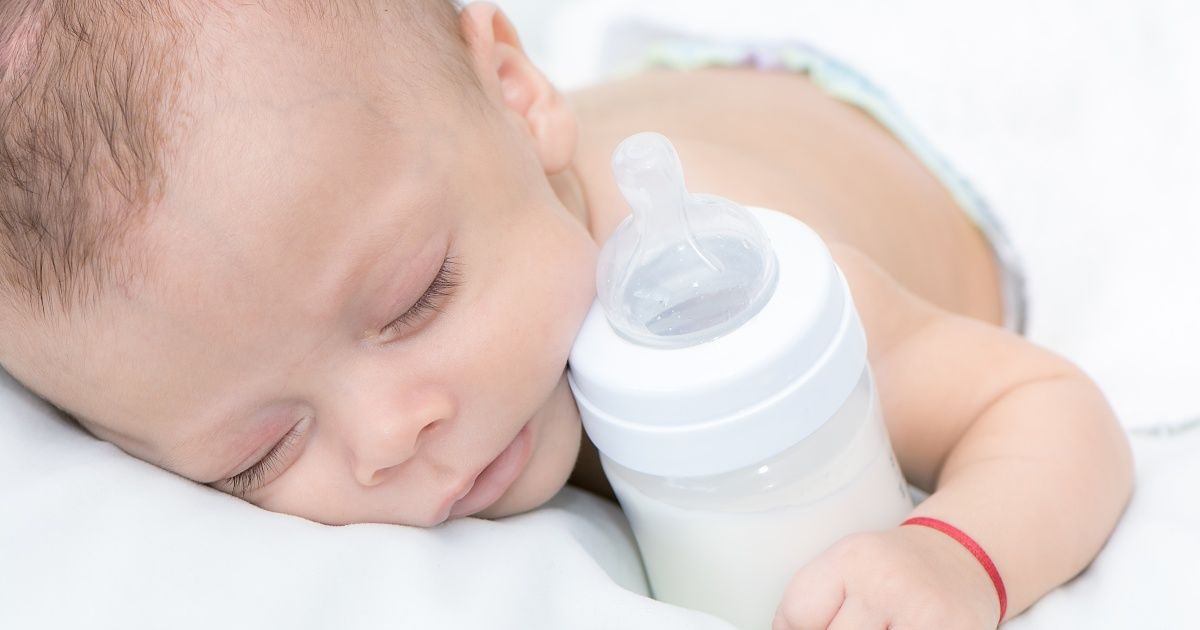 Newborns can be sleepy, so this technique works best with them, especially if they are working through some feeding issues like having just gotten a tongue tie fixed or if baby was born a little early.6,7
Newborns can be sleepy, so this technique works best with them, especially if they are working through some feeding issues like having just gotten a tongue tie fixed or if baby was born a little early.6,7
Additionally, a warm baby can be a sleepy baby! Keep baby cool, rub baby’s back, or run your finger across their cheek and chin. This can be done for both bottle and breastfeeding babies.8
Do breast compressions if you are nursing at the breastCompressions can be particularly effective for a sleepy baby. This action helps increase the flow of milk, which can be helpful for a baby who is having trouble sustaining a full feeding session.8
When you notice baby not drinking or the drinking/swallowing has slowed down, give your breast a squeeze (but not so strong that it hurts). You should see baby’s suckling start to pick up.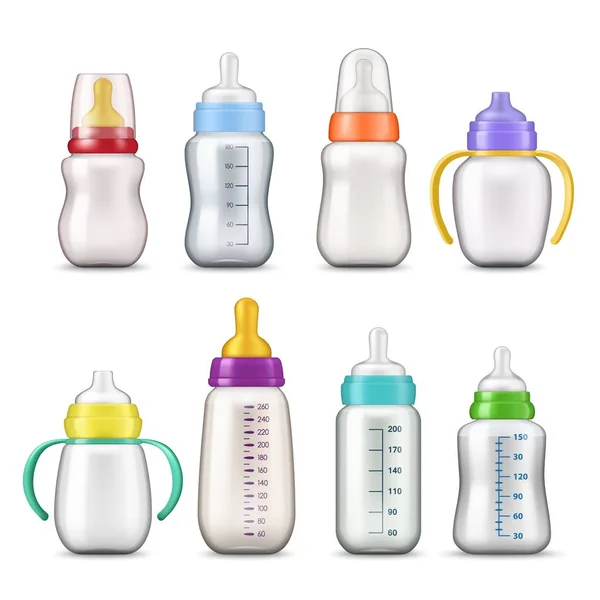 Keep squeezing until baby slows down their suckling again.8 You can repeat this as often as you would like.
Keep squeezing until baby slows down their suckling again.8 You can repeat this as often as you would like.
Babies are primed to eat when they need to, and restriction or a strict schedule can lead to underfeeding, which can cause even more issues with sleepiness.7,10 A fed baby is a stronger and more alert baby.
Note that you may need to wake baby to feed if your newborn is eating less than 8 times per day, is having trouble gaining weight, and/or is sleeping a 4 hour or more stretch more than once per day.7
Read more:Breastfeeding On Demand Vs. On a Schedule
Supplement with more breastmilk or formula if neededIt’s okay to supplement if needed to help keep baby meeting their nutrition needs while feeding concerns are being investigated. Supplementation can be with expressed breast milk, donor breast milk, or formula if the first two aren’t available.
Supplementation can be with expressed breast milk, donor breast milk, or formula if the first two aren’t available.
Supplementing a small amount prior to nursing at the breast will allow baby to finish at the breast and take their fill.11
Read more:
How Do I Supplement my Breastfed Baby with Formula?
Dealing With a Low Breastmilk Supply
If baby is bottle feeding, try a different nipple size or shapeSome babies (especially those with a tongue tie or other issue) may have trouble getting their mouth around certain nipples and this can cause feeding to be harder than it needs to be. If you change nipple sizes, be careful that the flow is not too fast for baby. You can try feeding baby upright to help them pace themselves.
Read more:
What Is Paced Bottle Feeding?
Choosing the Best Bottles and Nipples for your Baby
If you are breastfeeding, try switching breastsSimilar to compressions, the faster flow of the previously unused breast may help keep baby awake. 12
12
Sometimes babies are not getting enough milk, and therefore become sleepier, because they are not latching well. This is because a shallow or poor latch may prevent baby from transferring an adequate amount of milk.6 Sometimes simply changing breastfeeding positions can help baby latch deeper; occasionally a bit more adjustments are needed.
Contact a lactation consultant for a full assessment if you suspect baby is not latching well.
Read more:
6 Breastfeeding Positions for You and Your Baby
Top Breastfeeding Latching Tips
Ask for helpIf baby is having trouble staying awake even with the above techniques, feedings take an excessively long time (40 minutes or longer consistently), baby isn’t gaining weight appropriately, or is difficult to wake, call your baby’s doctor ASAP.7,12
Let's Chat!We know parenting often means sleepless nights, stressful days, and countless questions and confusion, and we want to support you in your feeding journey and beyond.
Our Happy Baby Experts are a team of lactation consultants and registered dietitian nutritionists certified in infant and maternal nutrition – and they’re all moms, too! They’re here to offer personalized support on our free, one-on-one, live chat platform Mon-Fri 8am-6pm (ET), and Sat-Sun 8am-2pm (ET). No appointment needed, no email or sign-up required. Chat Now!
Read more about the experts that help write our content!
For more on this topic, check out the following articles:Breastfeeding: How to Support a Good Milk Supply
How To Deal with Nursing Strikes while Breastfeeding
Feeding Tips for Healthy Weight Gain in Babies and Toddlers
How Much Formula Does My Baby Need?
Sources
Artificial feeding of babies | Bebbo
Submitted by Ilya Danshyn on Wed, 12/08/2021 - 18:40
Sometimes the baby cannot breastfeed, so you have to express milk and bottle feed the baby. Some babies are formula fed because for some reason breastfeeding is not possible, or lactation has stopped prematurely, or you have chosen to formula feed your baby.
- Make sure that the rate of milk flow from the bottle through the nipple is appropriate for the baby.
- To check this, turn the filled bottle upside down.
- Milk should drip quickly, not squirt. If you have to shake the bottle hard to make the milk drip, it means that the nipple is not providing the normal intensity of feeding.
- The baby can fall asleep even before he has eaten everything from the bottle.
- It is normal for a small amount of milk to leak from the corners of the mouth; it will stop when the child gets older.
- If you can't find the perfect nipple, choose the one that produces the most milk; it's okay if you have to go through how many nipples before you find one that's right for you and your baby.
How to bottle feed your baby
- Sit back and hold your baby in your arms, gently but firmly. It is better for the baby to be in a more upright position, similar to the position when breastfeeding.
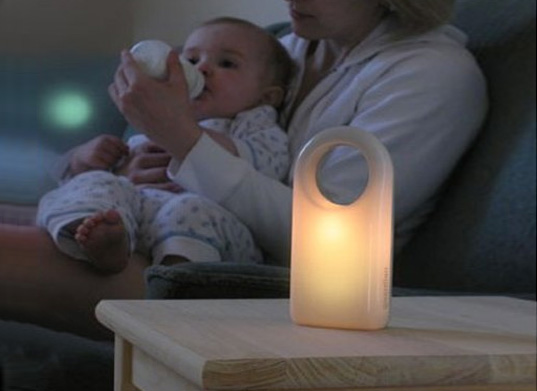
- Place the pacifier between the baby's lips; he will open his mouth and start sucking.
- Hold the bottle at an angle so that the nipple and mouth of the bottle are constantly filled with milk; this will prevent the child from swallowing air.
- When the baby stops actively sucking or has eaten half the milk from the bottle, carefully remove the bottle and check if he wants to burp; after that, you can continue feeding.
- Change the position of the baby during feeding or at least at each feeding; this allows even stimulation of the baby's sensations on both sides of the body and prevents positional deformation of the head.
How much milk does a baby need?
- The number of meals and the amount of milk is determined by the baby! Different babies require different amounts of breast milk or formula. Feeding time is not always evenly distributed over the time of day, sometimes children eat more during the day, followed by a long night break.

- If you are formula feeding, check the chart on the box. Of course, the recommended serving size for your age will only serve as a guideline and may not necessarily be appropriate for your child.
- When a baby begins to receive complementary foods, as the amount of solid food increases, the baby's need for milk decreases.
- The amount of formula your baby eats will decrease when he switches from bottle to cup.
- By the age of 12 months, when a baby can switch to cow's milk, he usually receives 500-600 ml of breast milk or formula per day.
Some babies never eat the recommended amount of milk for their age and height. For some, this "recommended" volume is not enough. At least six wet diapers during the day, constant but not excessive weight gain, a healthy and active child - all this indicates that everything is in order. If you are concerned that your baby is not getting enough milk or formula, contact your doctor.
Responsive feeding from the bottle in accordance with the needs of the child
- Feed the baby when he shows that he is hungry and not on the schedule, follow his signals.

- Do not feed the baby if he is not hungry, just because the formula is already prepared - this can lead to overfeeding the baby.
- When a baby is bottle fed, there is no difference between foremilk and hindmilk that affects the feeling of fullness in a breastfed baby.
- The child is often held so that the milk simply flows into the mouth rather than actively suckling; in this case, he eats too much milk too quickly.
- During feeding, watch the baby for signs of satiety - he turns away from the bottle, sucks lazily - and stop feeding in time.
- Hold the baby close to you during feeding, hug and talk to him; it stimulates growth and development and also strengthens the bond between you and your child.
- The baby did not eat everything from the bottle and fell asleep while eating.
- Don't worry if the child hasn't eaten everything; he knows how much formula or breast milk he needs.
- If the child falls asleep while eating, put him on your shoulder, stroke or pat him on the back and legs; Changing diapers is also an effective way to wake up a baby.

- Wait until the baby is awake before giving him any leftover milk.
Always empty the remaining milk from the bottle if more than an hour has passed!
Night feeding
- Every baby is different. Some wean from night feeding at four months, and some at two years. From the 6th month of life, healthy children no longer need night feeding. Now it's just a habit that gets harder to change the older the child gets.
- If a baby is bottle fed, this is the last age to stop eating at night! Do not replace milk with juices or other sweetened drinks to protect your child's teeth from cavities.
- If your baby drinks 60 ml or less of milk during the night, you can simply stop feeding at night and calm the baby as you usually do, and then put him back in the crib to fall asleep on his own.
- If your baby eats more than 60 ml every night, gradually reduce the amount of milk over 5-7 nights and lull the baby as you normally do.
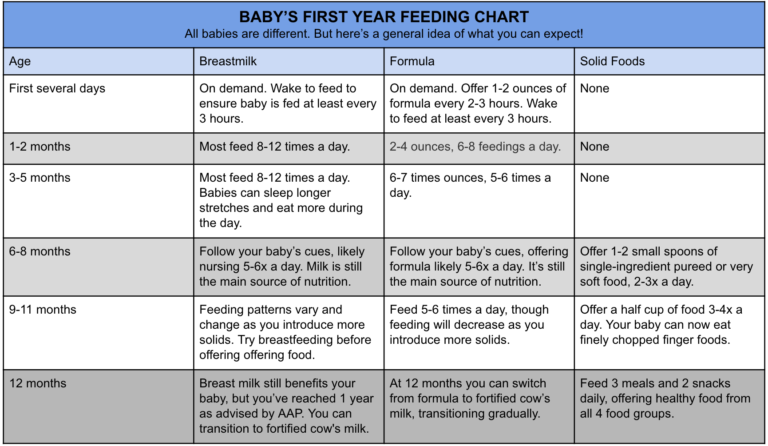
Risks of bottle feeding in bed
- If your child gets used to falling asleep with a bottle in bed, it will be more difficult for him to learn to calm down or fall asleep on his own.
- If a baby falls asleep with a bottle in his mouth, there is a risk of choking on milk and suffocation. Babies are not as light sleepers as older children and adults, and do not wake up if something prevents them from breathing.
- A mixture left in the mouth during sleep leads to dental caries.
- When a child drinks from a bottle lying down, the risk of ear inflammation increases.
Australian Article
On
Cover Image
Image
© UNICEF/UN0158032/Voronin
KeyWords
Breast Feed
Category
Power
Child Age
1st month
2nd month
3-4 months
022
↑ Top
In most cases, switching a baby from breastfeeding to bottle feeding does not cause any problems. If your breastfed baby refuses a bottle, don't worry. This is a common occurrence in many babies who are used to breastfeeding. Obviously, this can create certain difficulties for moms, especially if you need to return to work in the near future.
If your breastfed baby refuses a bottle, don't worry. This is a common occurrence in many babies who are used to breastfeeding. Obviously, this can create certain difficulties for moms, especially if you need to return to work in the near future.
3 Philips Avent products to help you bottle feed:
So why is your baby refusing the bottle and crying? There are many ways to quickly and easily teach a breastfed baby to a bottle. Here are important tips on what to do when your baby refuses a bottle.
Is the baby refusing the bottle? Take a step back
If your baby cries while bottle feeding, the first thing to do is to start over and rethink your feeding approach and technique. Try the following steps when bottle feeding your baby: [1]
- Lift and tilt your baby's head forward. Before inserting the pacifier into the baby's mouth, make sure that the baby's head is raised and tilted over his body to avoid choking: so that the baby does not choke and have the opportunity to burp during bottle feeding.

- Insert the pacifier. Bring the pacifier to the baby's lips and gently guide it into the baby's mouth. In no case do not try to press the nipple on the baby's lips and try to push it into his mouth. After touching the pacifier to the baby's lips, wait for the baby to open his mouth and take the pacifier.
- Hold the bottle at an angle. Tilt the bottle at an angle so that the nipple is only half full. So the child can eat at his own pace.
- Let the baby burp during and after feeding. It can be useful for a child to burp not only after feeding, but also approximately in the middle of the process. This will help reduce gas or tummy discomfort that your baby may experience from swallowing too much air.
- Stop in time, do not overfeed the baby. If the baby begins to turn his head away from the bottle or closes his mouth, then he is full and you need to stop feeding.
- Perhaps the flow of milk from the nipple to the baby is weak or, on the contrary, too fast, so he is naughty and refuses the bottle.
 Try changing the nipple to a nipple with a different flow.
Try changing the nipple to a nipple with a different flow.
Other tips if your baby refuses a bottle
If you've followed the steps above and your baby still refuses a bottle, don't worry. There are other ways to help bottle feed your baby. Here are some simple tricks you can add to your bottle feeding process. [2]
1. Remind your child about mom.
Sometimes a child can be fed by someone other than his mother - dad, grandmother or, for example, a nanny. If your baby fusses while bottle feeding, try wrapping the bottle in something that smells like mommy, like a piece of clothing or some fabric. This will make it easier to feed the baby when the mother is not around.
2. Try to maintain body contact while bottle feeding.
Some babies need contact with their mother, so try bottle feeding while leaning against you. However, some babies are better at bottle feeding when they are in the exact opposite position than when they are breastfed.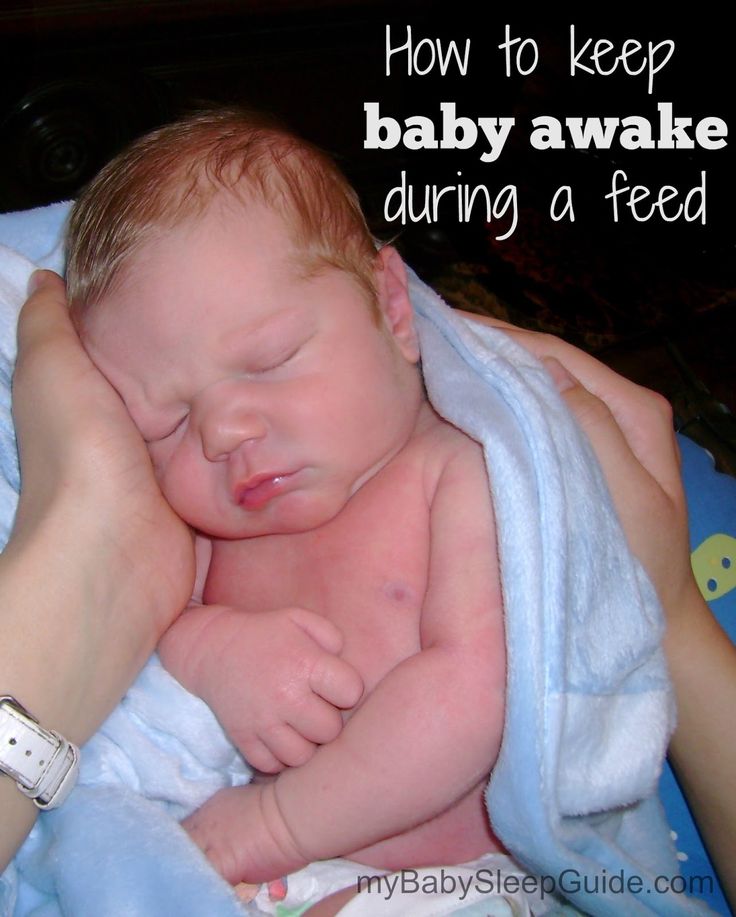 For example, there is a position with bent legs. Lay the baby on your bent knees, facing you, with the baby's legs pointing towards your belly. During feeding, the baby will be able to look at you and contact you in this way. If your baby refuses a bottle, experiment to see which works best.
For example, there is a position with bent legs. Lay the baby on your bent knees, facing you, with the baby's legs pointing towards your belly. During feeding, the baby will be able to look at you and contact you in this way. If your baby refuses a bottle, experiment to see which works best.
3. Move while feeding.
Sometimes all it takes to get your baby to take the bottle is a little wiggle or walk. The next time your baby starts crying while bottle feeding, try moving around a little rhythmically to calm him down.
4. Try changing the milk temperature.
If the baby still does not want to take the bottle, check if the milk in the bottle is too hot or too cold. Before feeding, put some warm breast milk on the inside of your wrist to check the temperature. Milk should be warm, but if it seemed hot to you, just place the bottle for a short while under a stream of cold water.
Choosing the right bottle for your baby If you plan to combine bottle feeding with breastfeeding, it is advisable to choose bottles with a nipple that will have a wide base as the bottle will grip closer to the breast.
 Also pay attention to the fact that the nipple is firm and flexible, the child must make an effort to drink from the bottle, as well as from the breast. Give preference to nipples with an anti-colic valve that vents air out of the bottle.
Also pay attention to the fact that the nipple is firm and flexible, the child must make an effort to drink from the bottle, as well as from the breast. Give preference to nipples with an anti-colic valve that vents air out of the bottle. Natural bottle allows you to combine breast and bottle feeding. 83.3% of babies switch from a Natural bottle to breastfeeding and back.*
If you choose a bottle for artificial feeding, then traditional bottles are fine for you, but it is desirable that the nipple is made of a hypoallergenic material, such as silicone, has an anti-colic valve and did not stick together when bottle fed. In case your baby spit up often, then use special bottles with anti-colic and anti-reflux valve, which reduces the risk of spitting up and colic.
Bottle with unique AirFree valve reduces the risk of colic, gas and spitting up. With this bottle, you can feed your baby in an upright or semi-upright position to reduce spitting up. Due to the fact that the nipple is filled with milk and not air during feeding, the baby does not swallow air, which means that feeding will be more comfortable.
Both bottles are indispensable if you want to breastfeed, bottle feed or just bottle feed your baby.
“My baby refuses to breastfeed but bottle feeds – help!”
Sometimes a baby gets used to bottle feeding and refuses to breastfeed. Therefore, it is important to use bottles that are suitable for combining breastfeeding with bottle feeding. If, nevertheless, you are faced with the fact that the child refuses to take the breast, try using silicone nipple covers to make the transition from the bottle to the breast and back more imperceptible.
Remember that if you want to combine breastfeeding and bottle feeding, it is worth waiting at least a month before offering a bottle, so that you are lactating and have time to get used to each other and develop a breastfeeding regimen.
Breastfeed and bottle feed your baby with pleasure
Remember that it takes a while for your baby to get used to bottle feeding. This is completely normal. If you have to go to work, be sure to set aside enough time to bottle train your baby beforehand.
This is completely normal. If you have to go to work, be sure to set aside enough time to bottle train your baby beforehand.
Remember that every child is different, so what works for one may not work for another. With a little time and patience, you will find out what works best for your baby when he refuses a bottle.
You will identify your child's unique needs. However, if your baby still refuses the bottle after all the steps above, check with your pediatrician.
Articles and tips from Philips Avent
References:
*O.L. Lukoyanova, T.E. Borovik, I.A. Belyaeva, G.V. Yatsyk; NTsZD RAMS; 1st Moscow State Medical University THEM. Sechenova, "The use of modern technological methods to maintain successful breastfeeding", RF, 02.10.2012 3 llli.org - The Baby Who Doesn't Nurse
llli.org - Introducing a Bottle to a Breastfed Baby
Baby+ app
Download the app and track your child's development and growth with trackers and save those special moments forever.